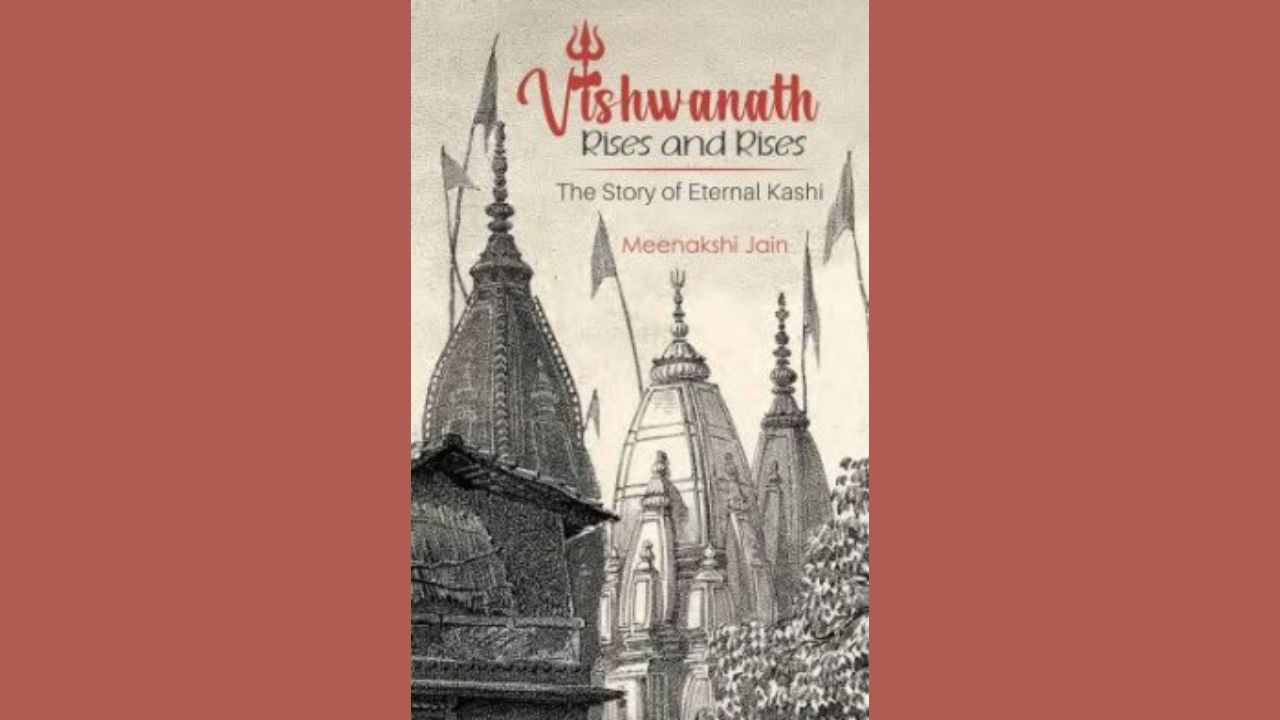Finding Shiva in the Ashes: Meenakshi Jain’s Epic Reconstruction of the Timeless City
Reading Padma Shri Meenakshi Jain is an exercise in discovery and delightful insights. Her works spanning over multiple decades now can be grouped into three broad categories: the documentation of themes (“The India They Saw” series), socio-political commentary that challenges dominant narratives (“The Hindus of Hindustan,” “Parallel Pathways,” etc.) and the history of spaces (“Rama and Ayodhya,” “Vasudeva Krishna and Mathura,” etc.). Her recent work falls squarely in the third category and is perhaps a sort of climax of the rich tapestry of multiple lives and narratives of these sacred Hindu places.
Like their predecessors, the work introduces the reader at the outset to the significance of the place (here, the city of Kashi) as per the religious scriptures like the Purana Panchalakshana, Skanda Purana, Padma Purana and then converges them with available historical evidence and archaeological findings, often a neat overlap. In the case of Kashi, the reader may be surprised to know that events mentioned in the scriptures point to pre-historic tectonic events preserved in collective memory. Building on this convergence, the author takes the reader on a period-wise linear journey through time, from its early descriptions in Jataka tales to its increasing relevance to Hindu rulers in the Gangetic basin, all culminating in the disaster that was the arrival of the iconoclasts.
The work then proceeds to explore the tenuous relationship between the ruler and the ruled, the continuous reclamation of various sites after their destruction, and more importantly the ever-changing architectural landscape of the city as sites are relocated, often fused as evicted deities find shelter in shrines dedicated to other related deities, the best example of which is indeed Bhagwan Vishveshwara and Avimukteshwara. Forts are erected around temples to shield them from public gaze and thus preserve them from religious zealotry and potential destruction.
The book covers the effects of the Maratha revival, the rise of the British East India Company and the subsequent British colonial rule, and the impact of modernization on the continuous battle of site reclamation first as an appeal to the nouveau colonial administrators, and thereafter directed through channels of civil litigation, including ruptures like the 1809 riots in the city. The appendices give a full view of the happenings of Kashi and for the lay reader to make sense of the recent developments along with historical understanding.
Another interesting feature of this book is the extensive use of pictures/images to provide visual support and enhance the reader’s understanding. This is in addition to the colored pictures assembled in a separate section usually found in the author’s other books.
Some fine points stand out in this book like sculptures jut out of temple walls:
The current generation lacks knowledge of our teerthas/punya kshetras (holy places, pilgrimage centers). However, this ignorance is coupled with a renewed interest in knowing about them. The book does a spectacular job explaining the sacredness of Kashi as a microcosm of the universe like the 84 ghats (steps to the river) for 8.4 million species that comprise the biosphere.
The picture of Kashi drawn is a miniature version of India herself; with trails of travesty and insult embedded in otherwise glorious epochs. Jain therefore sketches Kashi’s history from its heydays as a center of fine textiles to become a major trading port of the country; to its fall into oblivion during the Sultanate era; from its rejuvenation at the hands of Mughal elites like Todarmal and Raja Man Singh under the nose of ambivalent rulers until the ruinous reigns of Shahjahan and Aurungzeb; and to the ghastly and exorbitant sum of Rs 5 million demanded of Raja Chait Singh by Warren Hastings to fund his incompetency of the Company’s finances.
This comparison with India is supported by the fact that the progress of chapters is designed to zoom in and out of Kashi and discuss the broader political landscape of the particular eras. Like the concentric circles around the central point of reverence, the temple of Visheshwar, the author discusses Kashi in relation to the power struggle between Koshala and Magadha during the Janapada period, the eclipse of Kashi by Ghazipur and Jaunpur during the Sultanate Era, and to its importance as seen from the Imperial Mughal Capital during their bitter power struggle.
Parallel to this political is civilizational: Jain tells us about Rani Bhawani of Natore, a comparatively big zamindari in Bengal who went all out of her way to repair the Panchakrosi Yatra; Jagatguru Adi Shankaracharya’s composition of Kashi-panchaka; the transformation of the city into the ultimate center for Advaita scholarship; the multiple visits by the line of Peshwas and their families, showering the city with repair and reconstruction works each time they visited; and Kashi’s standing as the nerve center of Hindu life unbound by political boundaries.
The book “Vishwanath Rises and Rises” by Meenakshi Jain provides a comprehensive exploration of the history and significance of the reclamation of Kashi in our age.

